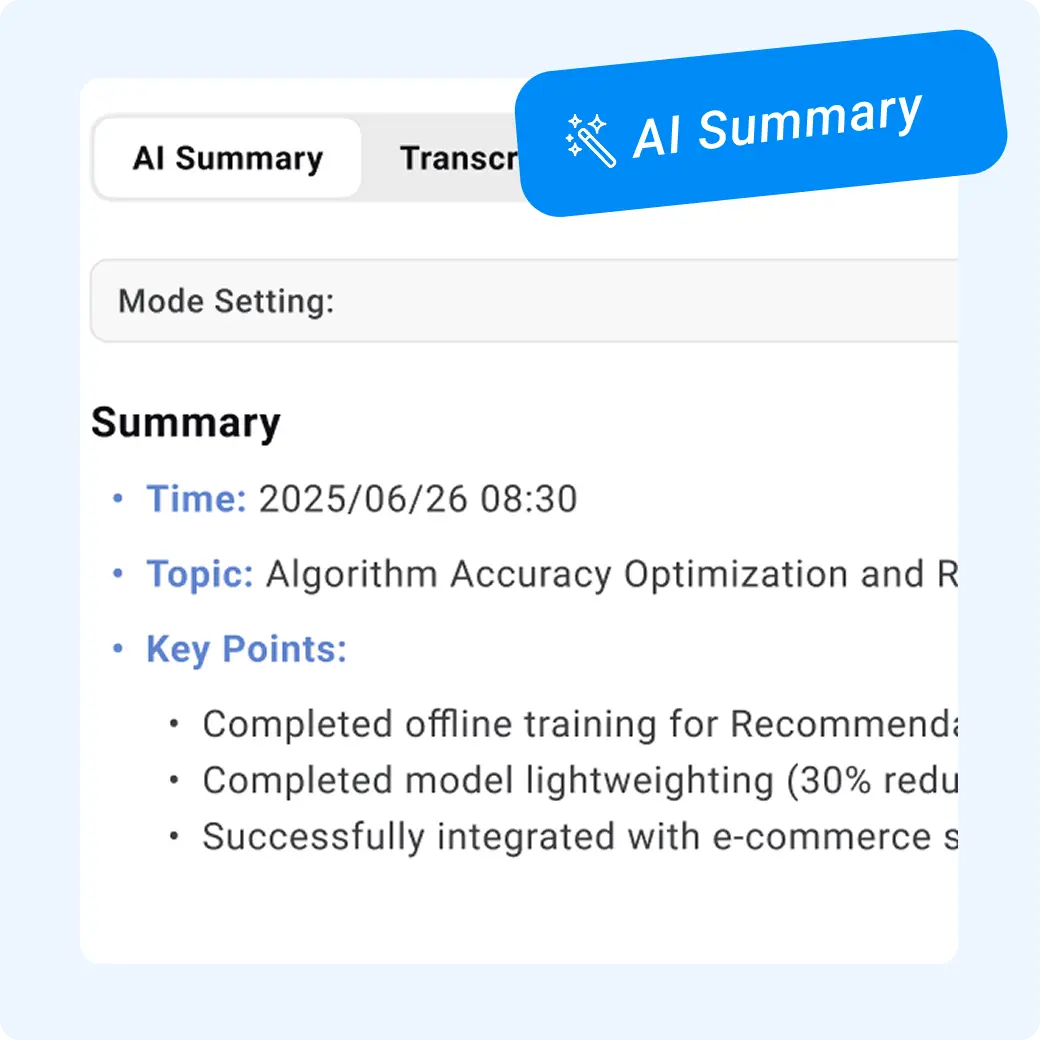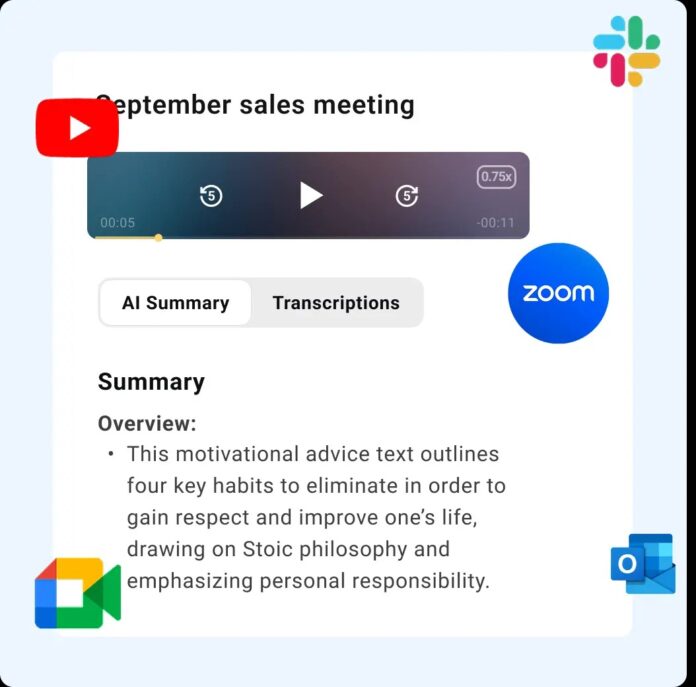Professionals waste an average of 30 minutes per meeting just trying to capture accurate notes. While frantically typing, you miss crucial context, misinterpret decisions, and struggle to participate meaningfully in discussions. The result? Incomplete documentation that fails to capture action items, and meetings where you’re physically present but mentally absent. AI transcription technology offers a practical escape from this productivity trap. Whisper AI, developed by OpenAI, transforms spoken conversations into accurate text automatically, handling multiple languages and challenging audio environments with remarkable precision. By implementing automated transcription, you’ll reclaim hours each week, ensure nothing important slips through the cracks, and finally engage fully in your meetings. Whether you’re a project manager juggling multiple teams, an executive assistant coordinating leadership discussions, or a consultant documenting client sessions, this guide will show you exactly how to build a meeting automation system that works. We’ll cover the technology fundamentals, walk through practical setup steps, and explore advanced techniques to transform raw transcripts into actionable meeting minutes.
The Meeting Minutes Crisis: Why Professionals Need Automation
Manual note-taking consumes between 20-40% of your cognitive capacity during meetings, forcing you to choose between active participation and accurate documentation. Research shows that professionals attending five meetings weekly spend approximately 130 hours annually just writing notes—equivalent to three full work weeks. Human transcription introduces error rates of 15-25%, with critical details like numbers, names, and deadlines most frequently misrecorded. When you’re managing back-to-back meetings, the documentation backlog compounds rapidly, leaving you scrambling to reconstruct conversations from fragmented notes hours or days later. This creates knowledge gaps that derail projects and force unnecessary follow-up meetings to clarify what was actually decided. The hidden costs extend beyond time: missed strategic insights, delayed action items, and team members working from different understandings of the same discussion. Automation eliminates these friction points entirely, delivering 95%+ accuracy while freeing you to contribute meaningfully to conversations, ask clarifying questions, and build stronger professional relationships through genuine engagement rather than distracted typing.
Whisper AI Explained: Your Meeting Transcription Engine
Whisper AI represents OpenAI’s breakthrough in automatic speech recognition, trained on 680,000 hours of multilingual audio data scraped from the web. Unlike traditional transcription services that struggle with accents and technical terminology, Whisper handles 99 languages with near-human accuracy, automatically detecting the spoken language without manual configuration. The system excels in challenging audio environments, filtering out background noise, overlapping conversations, and poor recording quality that would derail conventional transcription tools. Independent testing shows Whisper achieves 95-98% accuracy on clean audio—matching professional human transcribers—while maintaining 85-90% accuracy even with moderate background noise. The technology accepts virtually any audio format including MP3, WAV, M4A, and FLAC files up to 25MB per segment. OpenAI offers five model sizes ranging from “tiny” (39MB, processes in real-time on laptops) to “large” (2.9GB, delivers maximum accuracy for critical documentation). The medium model strikes the optimal balance for most professionals, delivering enterprise-grade transcription quality while running efficiently on standard business computers without requiring expensive cloud computing resources or ongoing subscription fees.
Essential Setup: Voice Recorder with Transcription Pipeline
Your recording hardware fundamentally determines transcription quality—invest in a USB condenser microphone like the Blue Yeti or Audio-Technica AT2020 for desktop setups, or use smartphones with external lavalier mics for mobile recording. Dedicated digital voice recorders offer superior battery life and storage for field work, while laptop built-in mics suffice only for solo recordings in quiet environments. Position recording devices within three feet of speakers, away from HVAC vents, computer fans, and windows to minimize ambient interference. Save files in lossless WAV or high-bitrate MP3 formats (minimum 128kbps) to preserve audio clarity that Whisper needs for accurate transcription. Establish a dedicated cloud storage folder structure organizing recordings by date, project, and participants before processing. For regulated industries, ensure your recording setup complies with consent laws—implement automatic disclosure announcements and secure encrypted storage solutions that meet GDPR, HIPAA, or industry-specific requirements for sensitive discussions.
Automating Meeting Minutes Step-by-Step with Whisper AI
Step 1: Audio Capture Best Practices
Position your primary microphone at the table’s center for group meetings, or use individual lapel mics for panel discussions where speaker attribution matters. Close doors, disable notification sounds, and silence mobile devices before recording starts. Implement a consistent file naming system like “YYYY-MM-DD_ProjectName_MeetingType.wav” to simplify batch processing later. For multi-speaker scenarios, brief participants to speak one at a time and state their names when first contributing—this dramatically improves transcription accuracy and later speaker identification. Always maintain a redundant recording using a secondary device or smartphone app as insurance against technical failures that could lose irreplaceable meeting content.
Step 2: Processing Audio for Optimal Transcription
Convert proprietary audio formats to WAV or MP3 using free tools like Audacity or FFmpeg before feeding files to Whisper. Trim dead air from recording starts and ends, but preserve natural pauses within conversations that provide context for accurate transcription. Use audio normalization features to boost quiet speakers to consistent levels without introducing distortion—Audacity’s “Normalize” effect set to -3dB works well. Split recordings exceeding 30 minutes into 15-20 minute segments at natural conversation breaks to accelerate processing and simplify error correction. Perform a quick manual playback at 1.5x speed to identify corrupted segments or technical glitches that would waste processing time.
Step 3: Running Whisper AI Transcription
Install Python 3.8 or newer, then execute “pip install openai-whisper” in your terminal to download the transcription engine. Run the command “whisper audiofile.mp3 –model medium –language en” for English meetings, or omit the language flag for automatic detection. Select the “base” model for quick drafts, “medium” for standard business documentation, or “large” for legal and medical contexts requiring maximum accuracy. Export transcripts using “–output_format txt” for plain text or “–output_format srt” to preserve timestamps for reference. Process multiple recordings overnight by creating a simple batch script that loops through your recordings folder, generating transcripts while you sleep.
Step 4: From Transcript to Automated Meeting Minutes
Feed your raw Whisper transcript into ChatGPT or Claude with a prompt like “Extract action items, decisions, and key discussion points from this meeting transcript, formatted as structured minutes.” Use find-and-replace to standardize speaker labels if Whisper output shows inconsistencies in name formatting. Create a meeting minutes template in Notion, Obsidian, or OneNote with sections for attendees, decisions, action items, and discussion topics, then paste the AI-generated summary into appropriate fields. Set up automated workflows using Zapier or Make to route completed transcripts through your summarization process and deliver formatted minutes to team collaboration platforms. Maintain a revision log noting any manual corrections, building a feedback loop that helps you refine prompts and preprocessing steps for future meetings.
Advanced Meeting Minutes Automation Techniques
Build custom vocabulary files containing industry jargon, product names, and team member names to dramatically reduce transcription errors—Whisper accepts text files with specialized terms that override default dictionary entries. Implement speaker diarization using pyannote.audio or similar tools that analyze voice patterns to automatically label who said what, eliminating manual speaker identification in multi-participant meetings. Layer sentiment analysis using GPT-4 API calls that flag tense exchanges, enthusiastic endorsements, or concerns requiring follow-up, providing emotional context that raw transcripts miss. Connect your transcription pipeline to Google Calendar or Outlook using APIs that automatically pull meeting metadata like attendees, agenda items, and scheduled duration into your minutes template. Create recurring meeting templates that preserve consistent formatting across weekly standups or monthly reviews, with predefined sections that AI populates from each new transcript. Establish version control using Git or document management systems that track every edit to meeting minutes, maintaining audit trails essential for compliance-sensitive industries while enabling team members to suggest corrections through structured review workflows that preserve original transcripts alongside refined summaries.
Whisper AI vs. Other Transcription Solutions
Whisper AI delivers 95-98% accuracy on clean audio, matching premium services like Otter.ai and Rev while remaining completely free and locally processed. Commercial transcription services charge $0.25-$3.00 per minute, costing frequent meeting attendees $500-2,000 annually, whereas Whisper requires only a one-time hardware investment and electricity costs. Privacy-conscious organizations benefit from Whisper’s local processing that keeps sensitive discussions off third-party servers, unlike cloud-based alternatives that store recordings for quality improvement and potentially expose confidential information to data breaches. Whisper supports 99 languages natively without additional fees, while competitors typically charge premium rates for multilingual transcription or limit language options to major markets. Customization flexibility separates Whisper from closed commercial systems—you can fine-tune models on industry-specific terminology, integrate with proprietary workflows, and modify output formatting without vendor restrictions. However, commercial solutions offer advantages in real-time transcription during live meetings, automated speaker identification without additional setup, and polished user interfaces that reduce technical barriers for non-technical users who need immediate results without command-line interaction. Platforms like Owll AI bridge this gap by combining Whisper’s powerful transcription engine with user-friendly interfaces designed for professionals who want accuracy without technical complexity.
Transform Your Meeting Documentation Today
Automating meeting notes with Whisper AI transforms how professionals capture, process, and act on discussions, reclaiming 130+ hours annually while delivering transcription accuracy that matches or exceeds human performance. This technology eliminates the impossible choice between active participation and accurate documentation, allowing you to engage meaningfully while comprehensive records generate automatically in the background. Whisper AI’s combination of zero recurring costs, local processing for sensitive information, and 99-language support makes enterprise-grade transcription accessible to individuals and organizations regardless of budget constraints. Start simple: record your next meeting with decent audio equipment, run it through Whisper’s medium model, and experience the difference between fragmented manual notes and complete transcripts. As workplace AI adoption accelerates, professionals who master automated documentation will gain competitive advantages through better knowledge retention, faster decision implementation, and stronger collaborative relationships built on full attention rather than divided focus. Download Whisper today, process a single meeting recording, and discover how much mental energy you’ve been sacrificing to a task that machines now handle better than humans ever could.

